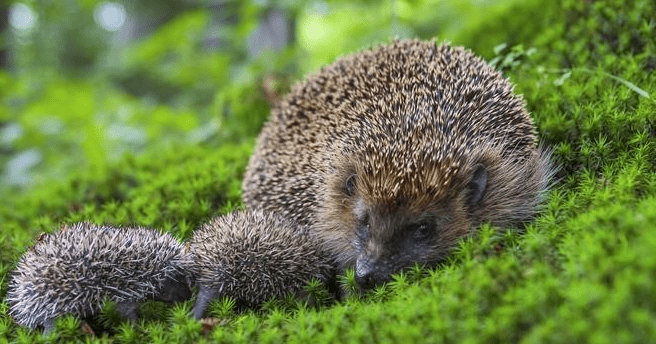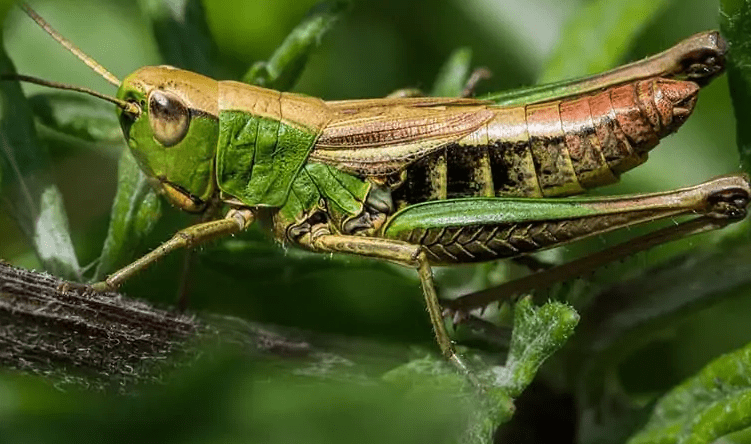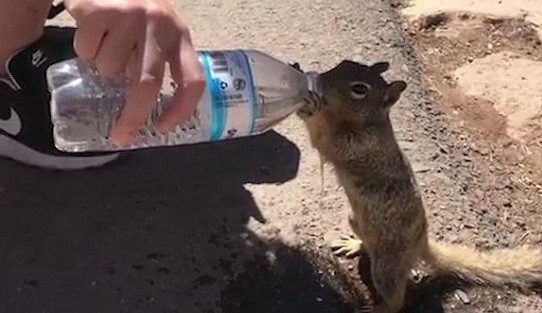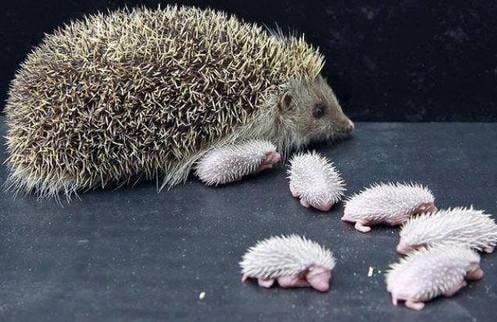Solitary and social bees (bumblebees) are everywhere in the world- in the countryside (in farmland or wilderness) in gardens and in cities. In some places, where fields are constantly being treated, gardens are their last refuge.
When we decide to help them, we volunteer to become guardian angels of wild bees. The flowers, the spaces that help the bees nest are also at the heart of the activity. By making the decision to put up an artificial bee box (even a well-designed one), we cannot force a wild bee to come or stay on our land. We can, however, develop empathy for the female bee that passes through our property to the point where she feels safe, and decides to make her nest there. Her decision to adopt the nest box is going to depend on a number of factors, and we need to do some sort of assessment – we need to think like the bee who has her priorities, needs and fears. I have done this and here is the list of factors that I think matter to a bee.
The raw materials of nesting activity
Adequate food at the time of the bee’s emergence and for the duration of the adult nesting phase (4 to 8 weeks for a given solitary bee species),

Proper space and size for a nest when a bee is searching for one, and bee-who-seeks-nest
Material to build their nests – moist soil with clay for mason bees, thick plant leaves, such as those on rose bushes, for carpet bees.
Positioning the nesting box
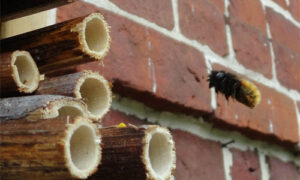
In the instructions provided with my nesting boxes, I talk about placing or positioning the nesting box very simply:
On a facade or a windowsill
Facing East or South/East.
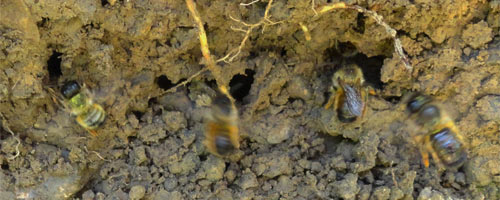
What is not explicit, but implicit in these instructions, is to choose a place where the nesting box is not too exposed to sun or rain. For example, a nesting box placed on a windowsill or hung on a building is often protected by the roof from the midday sun and rain.
Positioning the nesting box
In the instructions provided with my nesting boxes, I talk about placing or positioning the nesting box very simply:
On a facade or a windowsill
Facing East or South/East.
What is not explicit, but implicit in these instructions, is to choose a place where the nesting box is not too exposed to sun or rain. For example, a nesting box placed on a windowsill or hung on a building is often protected by the roof from the midday sun and rain.

I also talked about how important it is to avoid extremes of temperature and humidity hence the need for a properly designed shelter. But it is also important to avoid having your exterior exposed to these extremes, as you cannot treat the wood to make it more waterproof. Fortunately to support our repopulation goals, we will not leave artificial nest boxes in place all year. We remove them after nesting and the death of the adults. Placing them in a quiet location (such as an outbuilding, garage or even inside the house) will – for mason bees – reduce the risk posed by excessive heat or humidity on the larvae during the summer.
After observing the bees around the boxes for several seasons, I have also seen that they inspect the boxes before deciding to nest in them. They will even go to the back of the Cabin or Dormitory to see if there are any holes (access for a solitary wasp). This inspection of the construction and exposure of the nest box is a priority for the females. This will keep the young larvae out of reach of parasites that attack the nests.
They will also avoid nesting in an area that is in the shade in the morning – the rising sun is after all its stimulant, its caffeine. So to further increase your chances of attracting females and encouraging them to come to your nest boxes, we’ll refine the list, avoid putting the nest box:
Entirely in the shade
Entirely exposed to the sun (which in some extreme cases can shrink the drawers of the nesting box)
Excessively exposed to rain or wind.
Attached to trees (for reasons 1 2 and 3) but also because it is difficult for bees to find their bearings among the leaves.
The height of the nesting box
Most of my nesting boxes are placed between 1.50 and 3 meters from the ground or on the edge of a window on the second floor. If the bees are not too awake, not warm enough in the morning or even tired at the end of their season, the height is an advantage.
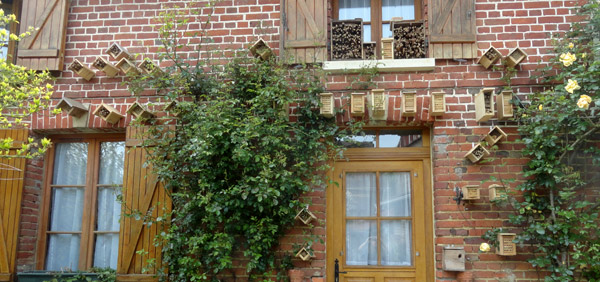
The height is also useful if your only place is frequented by small humans and pets, such as around a door. This will avoid being in their flight path, where the worst that can happen is that these shy bees are bothered by your presence.
The central shelter placed in an orchard or field is lower (1 meter from the ground). The challenge with low nesting boxes is that ants are attracted to the pollen crumbs that fall just in front of the entrance of the boxes in the central shelter and that can entice them to raid the nests that are not yet closed. On a high wall it is more difficult for the ants to make the connection between the crumbs on the floor and the activity in the higher bee boxes.
The smell of safety
Even though they are solitary (and by definition do not form colonies) mason bees – like some species of ground bees – choose to nest near the activities of their sisters and cousins. The smell of hatched cocoons will also suggest to a bee that the area was a safe zone during the larval phase. All it takes is one bee to nest in the box, and the next year the bees that pass through your yard will be more motivated to stay and your population will increase dramatically, year after year.
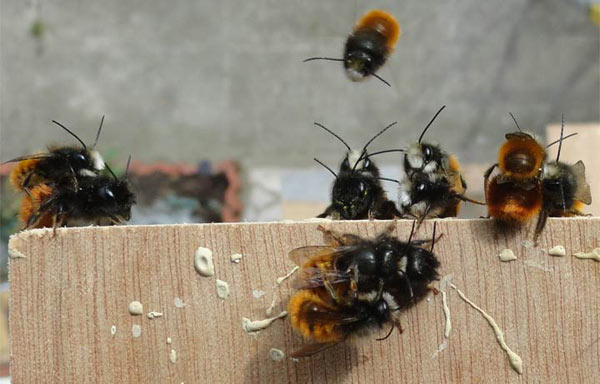
Timing
Unfortunately, even if we give it our best shot, the last – and probably most important – factor is timing. We can’t know when the females looking for a place to nest will cross our land. However, we do know that the nesting phase of the spring bees, will normally begin as early as the third week of March for Osmia cornuta. The emergence for the Osmia rufa is normally mid-April. The nesting season will end respectively 6 to 8 weeks later for both.
If the nest boxes are placed late after the beginning of Spring, the solitary bee species will be different, rarer, but also as important for the pollination of the flowers of the season. Carpet bees, for example, are just as fascinating in the way they create their nests with slices and pieces of leaves. They too need nests of the same dimensions.


